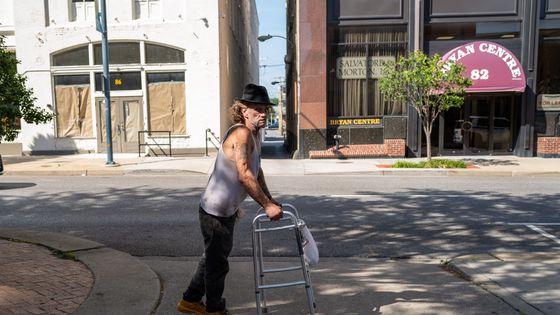
Nearly 107,000 Americans died of drug overdoses in 2021, according to final figures released December 22, 2022 by Centers for Disease Prevention and Control (
CDC). An epidemic responsible for 500,000 deaths since the 1990s. If the Covid period seems so deadly, it is because it brings together the elements that seem to be causing consumers to plunge, in particular social isolation and mental health problems, such as the Depression. This reality seems to have been taken into account by Joe Biden who wanted to emphasize prevention, rather than repression. He announced in the fall of 2022 a major investment plan of 1.5 billion dollars to try to stem this deadly epidemic. A policy contrary to that of Donald Trump, who had bet on the repression against the Mexican cartels, the main source of the substances which flood the American market. In question in recent years: the appearance of Fentanyl, an opioid 50 times more deadly than heroin and now the leading cause of death for 18-49 year olds. In 2022, 379 million doses were seized. A record for this inexpensive product considered a remedy by young people plagued by anxiety and depression.
So, are the new generations of opioids more deadly than the old ones? What policies are in place to stem the overdose epidemic? Between prevention and repression, how is American health policy taking shape?
Julie Gacon receives Elisa Chelleprofessor of political science at the University of Paris-Nanterre and Bertrand Leboviciaddictologist.
For further :
- Elisa Chelle co-edited a dossier entitled “Health in America” published in issue 38 of the journal American Policy entitled in 2022.
- Bertrand Lebovici is the author of
Drugs, the long march co-published by Harmatan and Paper editions in November 2022.
Second part: the focus of the day
In British Columbia, the challenge of decriminalization to save lives
With Jean-Sebastien FalluAssociate Professor at the School of Psychoeducation at the University of Montreal.
On January 31, British Columbia, a province on the Canadian Pacific coast, tried to curb the opioid crisis: decriminalization for the possession of small doses of drugs, opioids but also cocaine and ecstasy. Since 2016, a state of health emergency has been declared in this state, there have been 14,000 deaths from overdoses, and in nearly 90% of cases Fentanyl is involved. The Downtown Eastside neighborhood in Vancouver has become emblematic of this pandemic, since the risk factors are cumulative there: housing crisis, unemployment… So why could having up to 2.5 grams of these products help reduce the risks?
A program prepared by Bertille Bourdon.

